`Alopeke
Nic Scott
Lead Research Scientist
BAERI/NASA ARC
nicscott.org
https://www.gemini.edu/node/21236 Credit: Gemini Observatory/NSF/AURA/Artwork by Joy Pollard

a single star, a circle representing the isoplanatic patch, and the small star shapes are "speckles"
a single star, a circle representing the isoplanatic patch, and the small star shapes are "speckles"
a single star, the smaller circles show worse seeing and smaller isoplanatic patches, each producing "speckles"
a single star, a circle representing the isoplanatic patch, and the small star shapes are "speckles"
a single star, the smaller circles show worse seeing and smaller isoplanatic patches, each producing "speckles"
a binary pair, close enough that they share an isoplanatic patch, producing "speckles" that correspond to their separation & position angle

a single star, a circle representing the isoplanatic patch, and the small star shapes are "speckles"
a single star, the smaller circles show worse seeing and smaller isoplanatic patches, each producing "speckles"
a binary pair, close enough that they share an isoplanatic patch, producing "speckles" that correspond to their separation & position angle
a binary pair, wherein the ratio of their separation to the isoplanatic patch size is such that their "speckles" are not correlated







a single star, a circle representing the isoplanatic patch, and the small star shapes are "speckles"
a single star, the smaller circles show worse seeing and smaller isoplanatic patches, each producing "speckles"
a binary pair, close enough that they share an isoplanatic patch, producing "speckles" that correspond to their separation & position angle
a binary pair, wherein the ratio of their separation to the isoplanatic patch size is such that their "speckles" are not correlated
Kepler-13AB








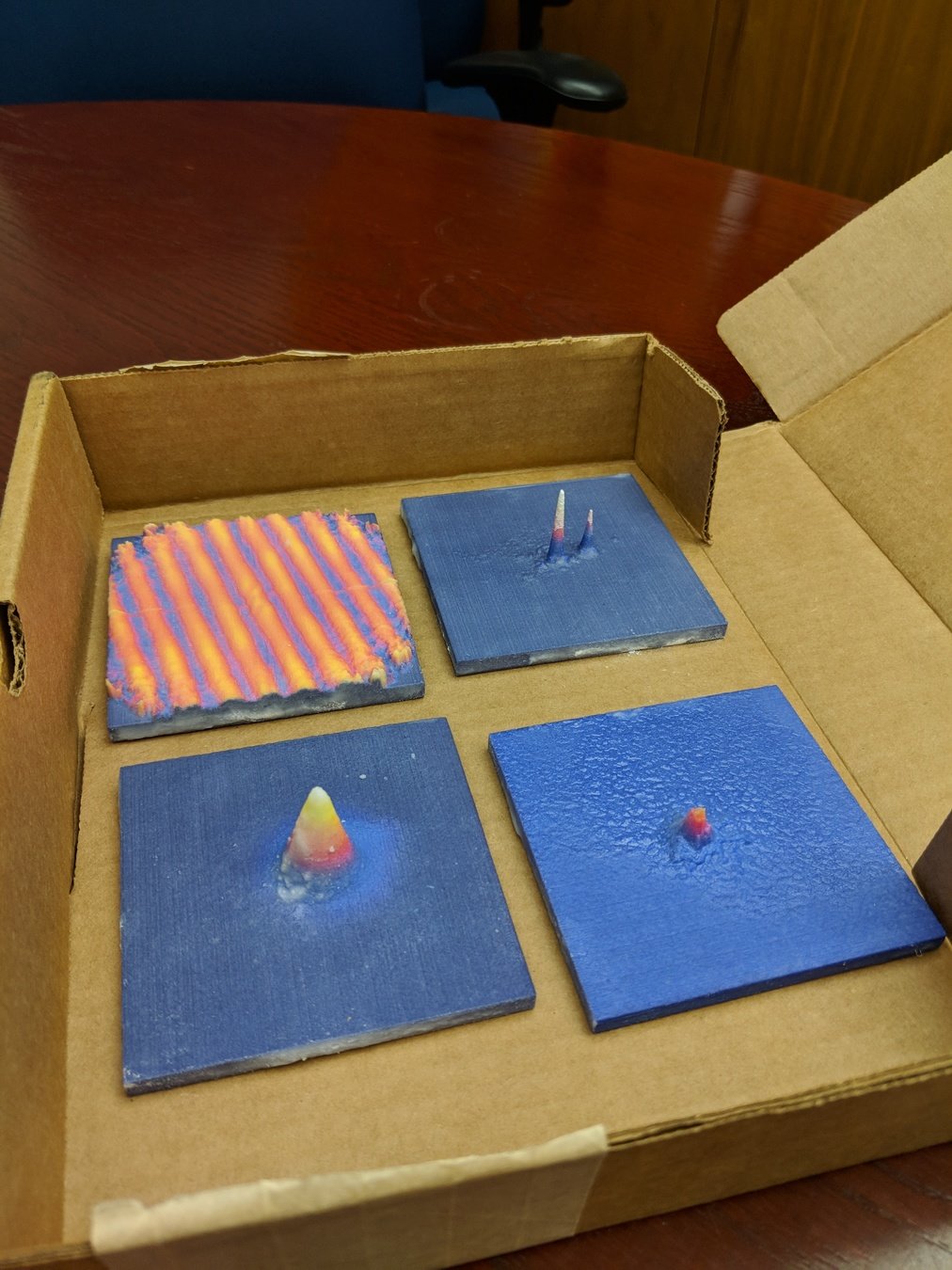


Labeyrie
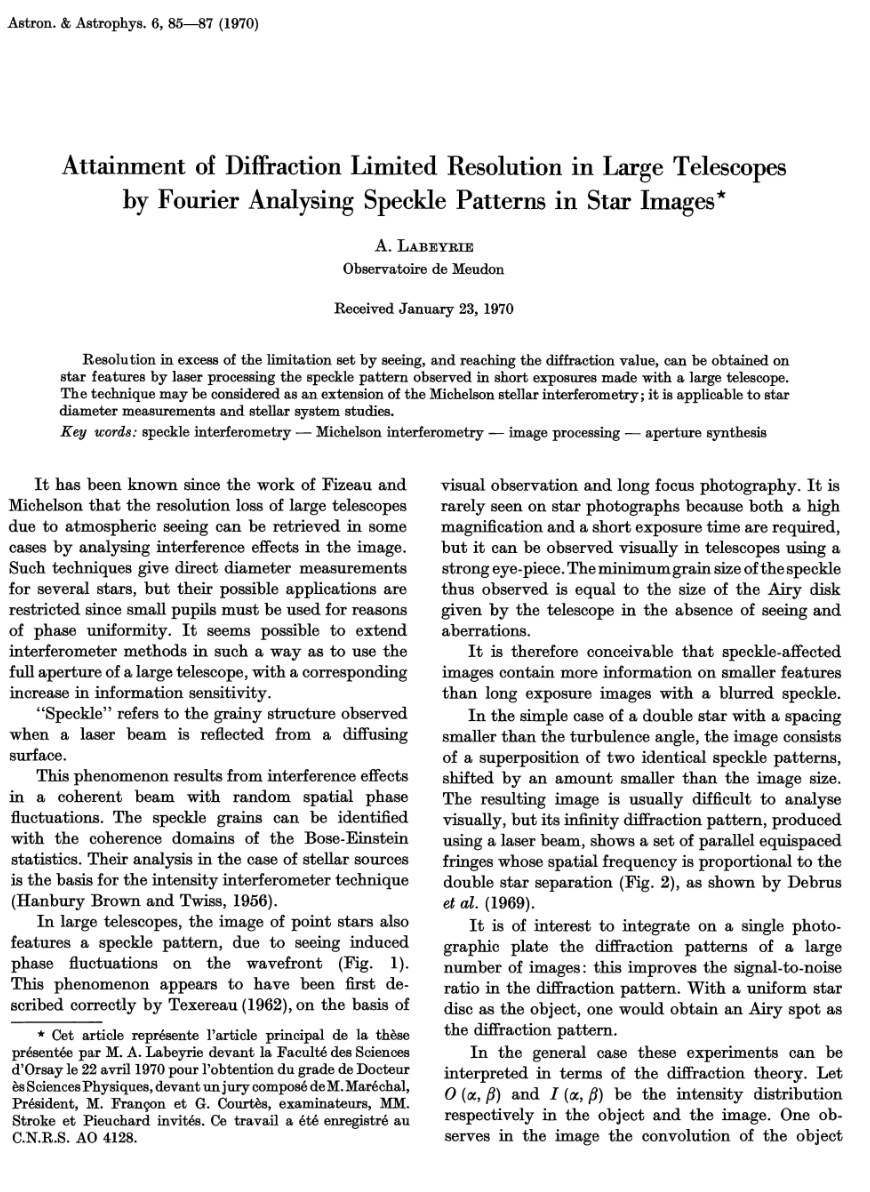
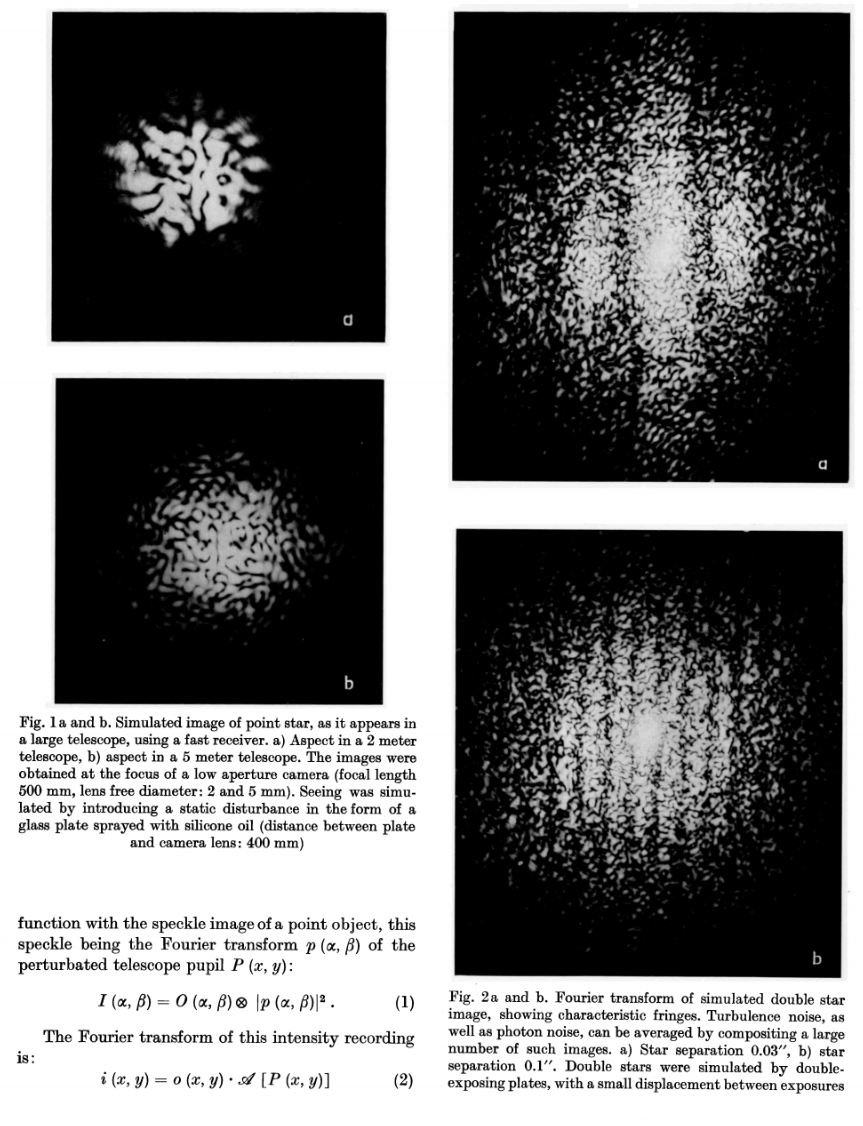
1970
Text
a method to obtain diffraction-limited resolution across the full aperture of a large telescope
long exposure
speckles blur
produce Airy pattern
true images are impossible, only centrosymmetric objects can be reconstructed
speckle pattern is the Fourier transform of telescope pupil
autocorrelation of speckles
(in Fourier space)
modulus
(time-averaged intensity)
In 1980’s bispectral analysis was found to have higher S/N and be less susceptible to systematic error.
Weigelt & Lohmann
1977-1983
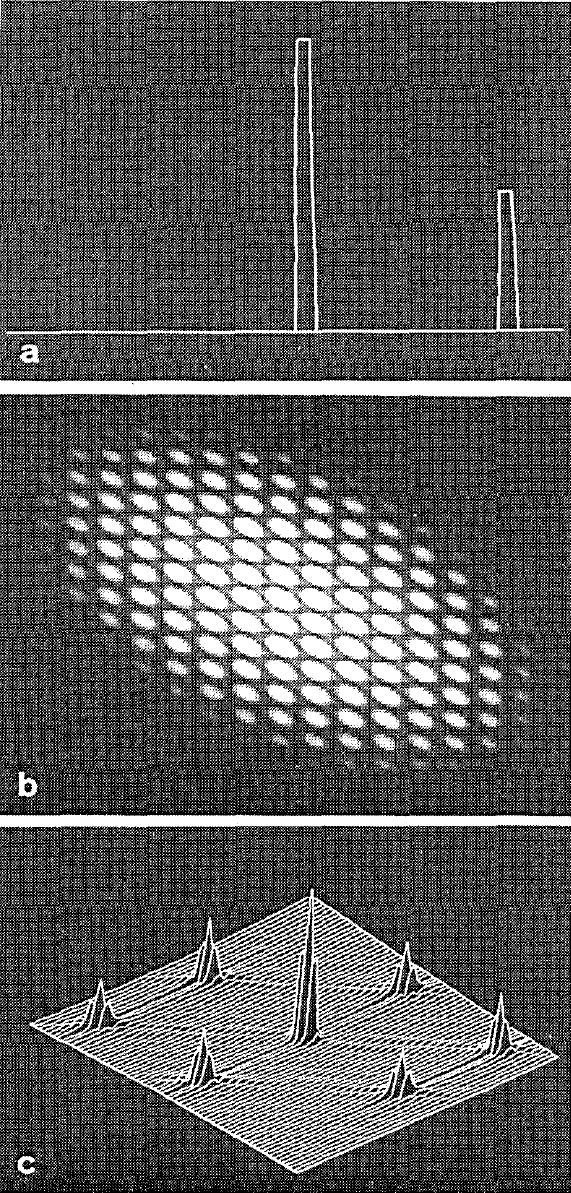
double star simulation
bispectrum modulus
triple correlation
record PSF of object
produce synthetic reference star by shifting the speckle pattern
phase is preserved
Speckle masking/triple correlation theory/bispectral analysis, a 3rd order correlation
deconvolve
true images
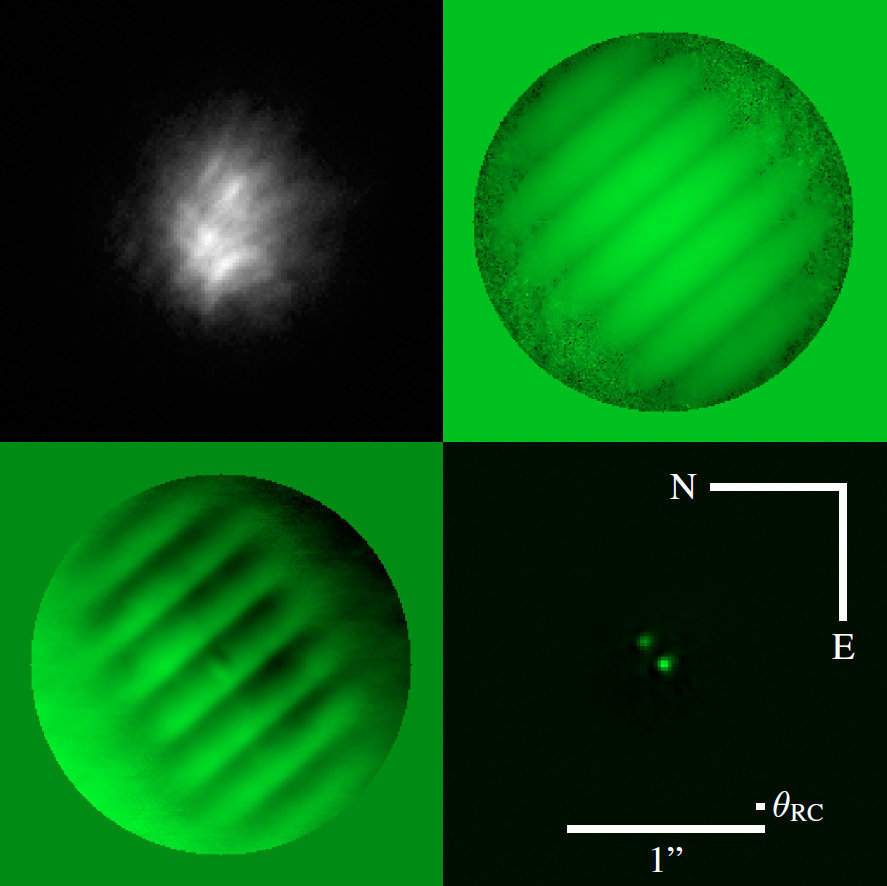
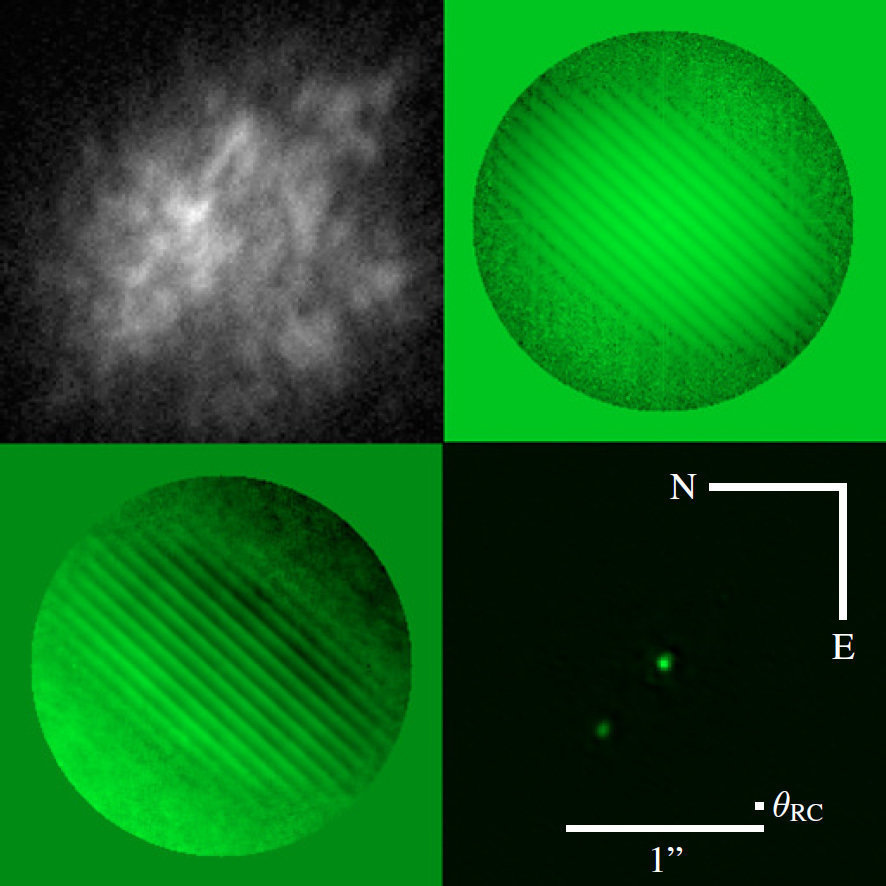
Fringe spacing
Fringe orientation
Fringe Depth
Binary separation
Binary position angle
Binary magnitude difference
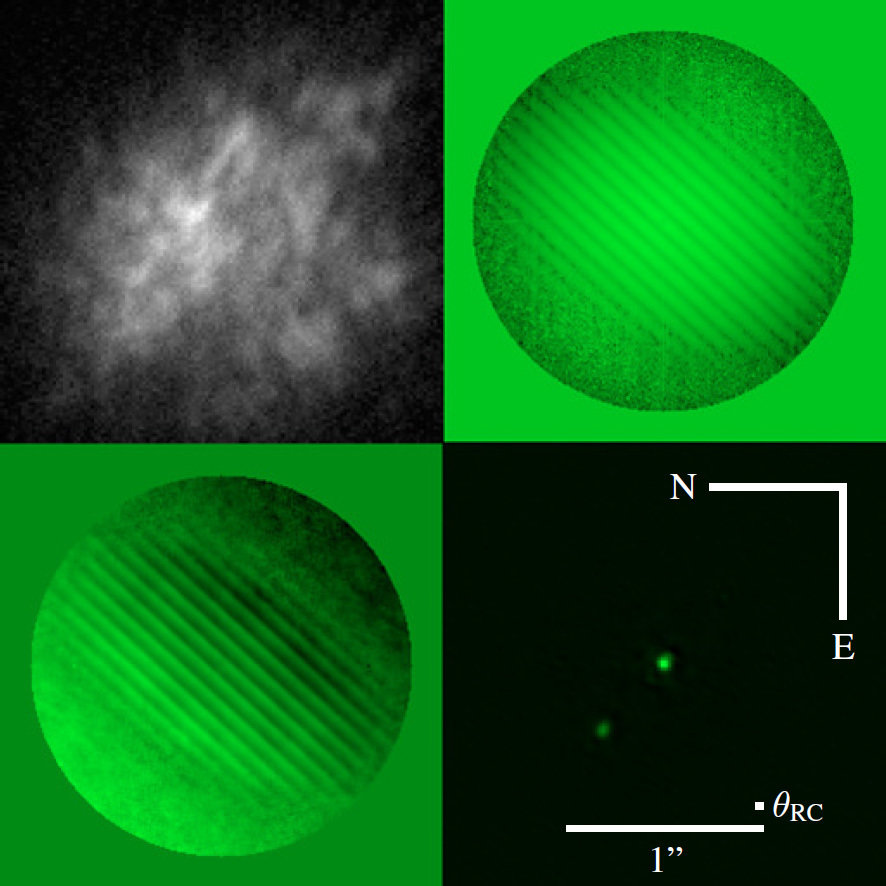





1s
40s
20min



An aside on Lucky Imaging
- reaches higher resolution than typical seeing
- does not utilize Fourier analysis
- not capable of reaching the diffraction limit
- requires a very large number of images

http://inspirehep.net/record/823349/plots
Fried
1978
record a large series of images
discard instances of poor resolution
combine the remainder through shift-and-add techniques
Can reach
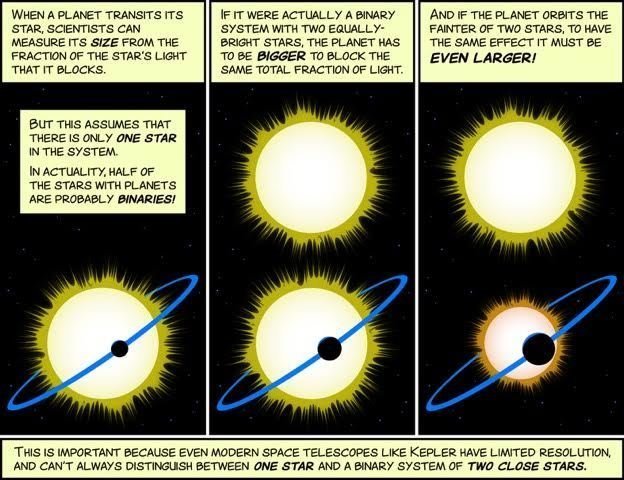


Science Programs
58 total proposals
138.3 total nights
(NOAO 2016A to 2019B)

- Constrain NEA diameters. Image SS objects
- Determine multiplicity of nearby K and M-dwarfs, does it vary across spectral type?
- Imaging of brown dwarfs and distant large planets, particularly around M dwarfs
- Investigate differences in planetary system architectures between multiple vs not (known) multiple host stars
- Examine long-term RV trends/determine binarity of RV planet hosts.
- K2, TESS follow-up
- Provide an unbiased sample for TESS, so statistical determinations of planet occurrence rates can be made
- Occultations, transit photometry, pulsar time scales, observe pulsating WDs at high cadence
Some proposals:


DSSI/NESSI/`Alopeke/Zorro









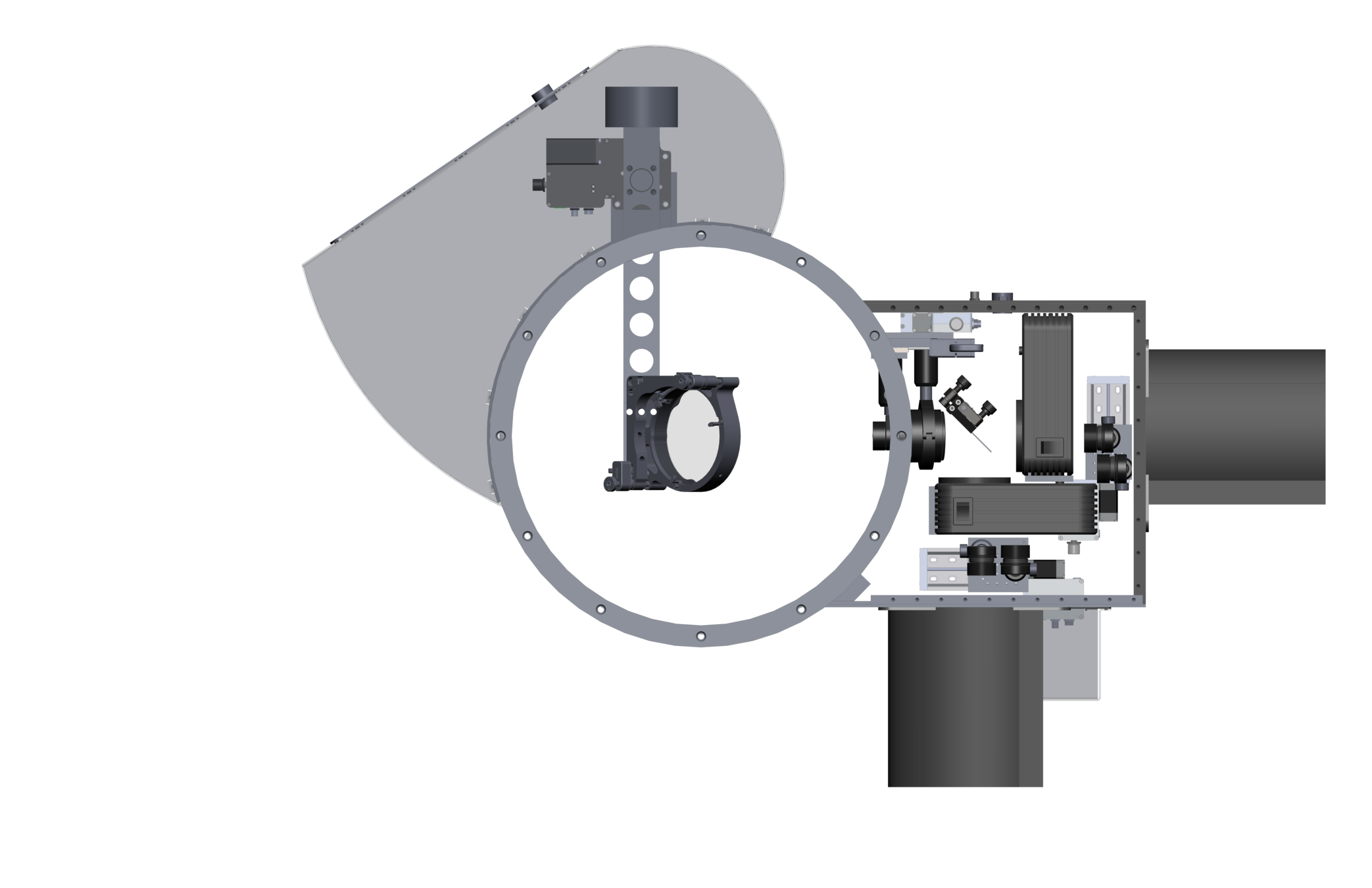





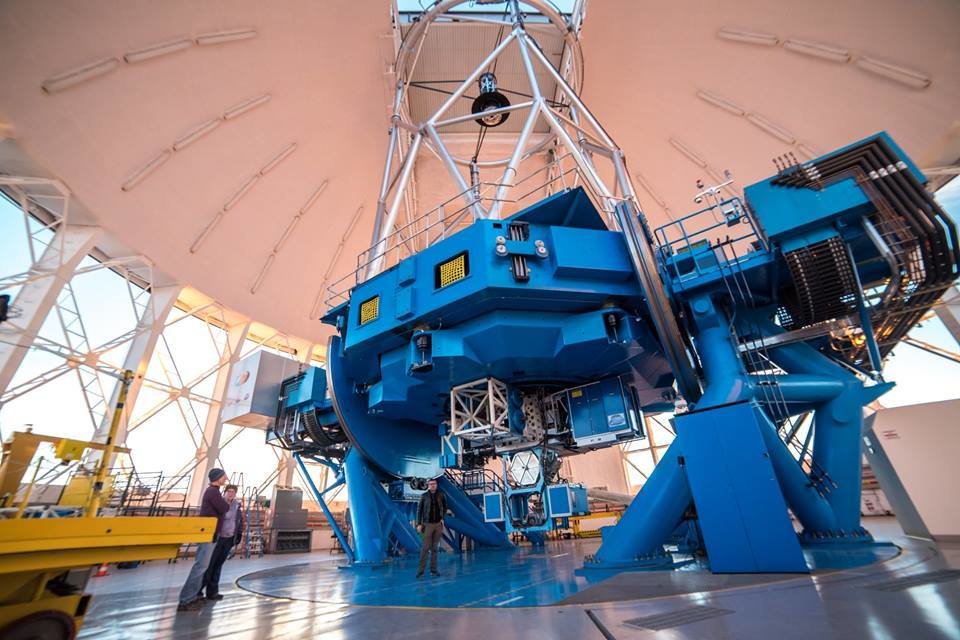







Speckle
- 10mas/pxl
- mag limit ~17
- contrast limit ~8
Wide Field
- 73mas/pxl
Speckle
- 18mas/pxl
- mag limit ~14
- contrast limit ~6
Wide Field
- 81mas/pxl


0.011'' @u
0.026'' @832nm
0.025'' @u
0.060'' @832nm
6.7''
60''
19''
56''
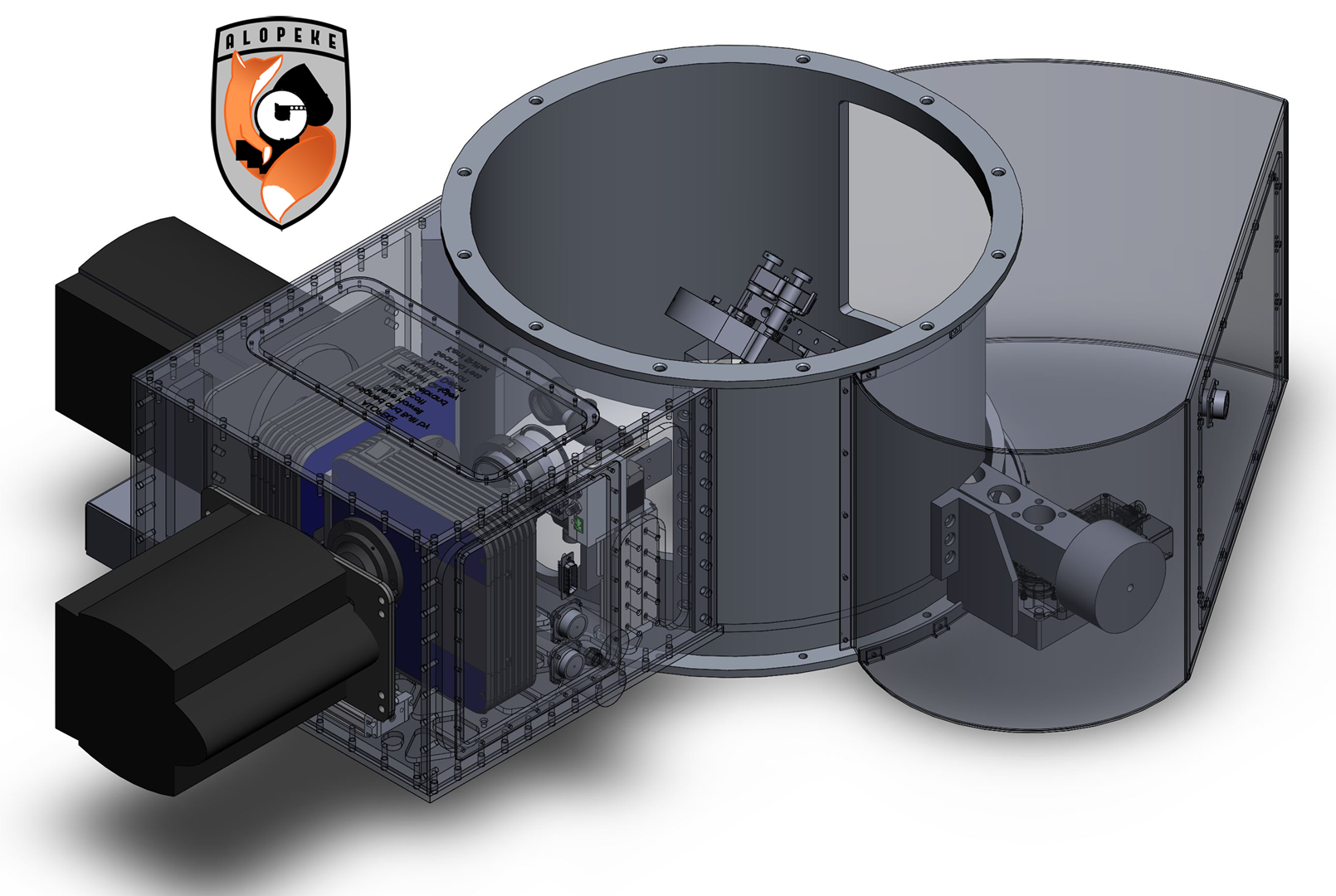
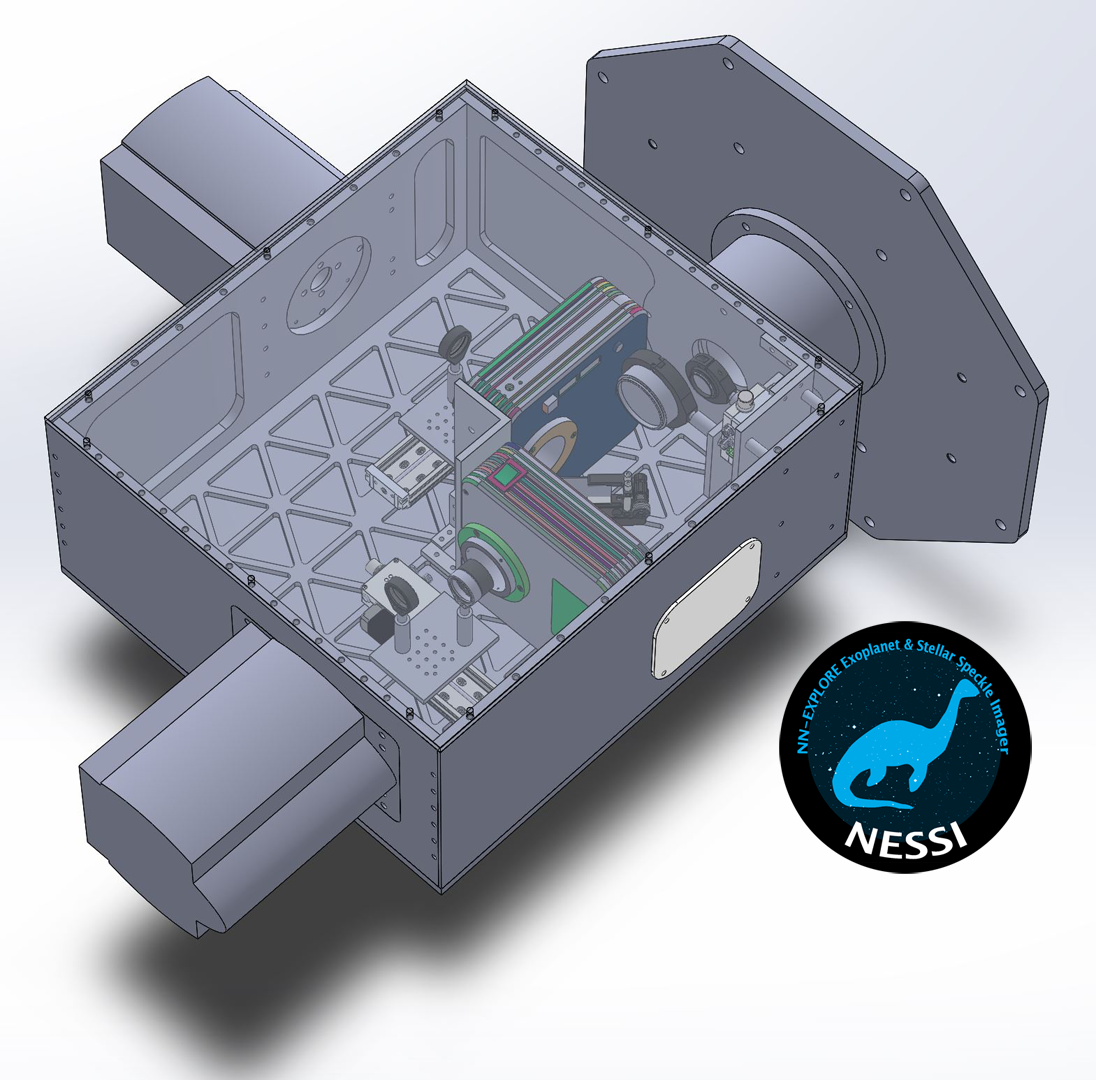






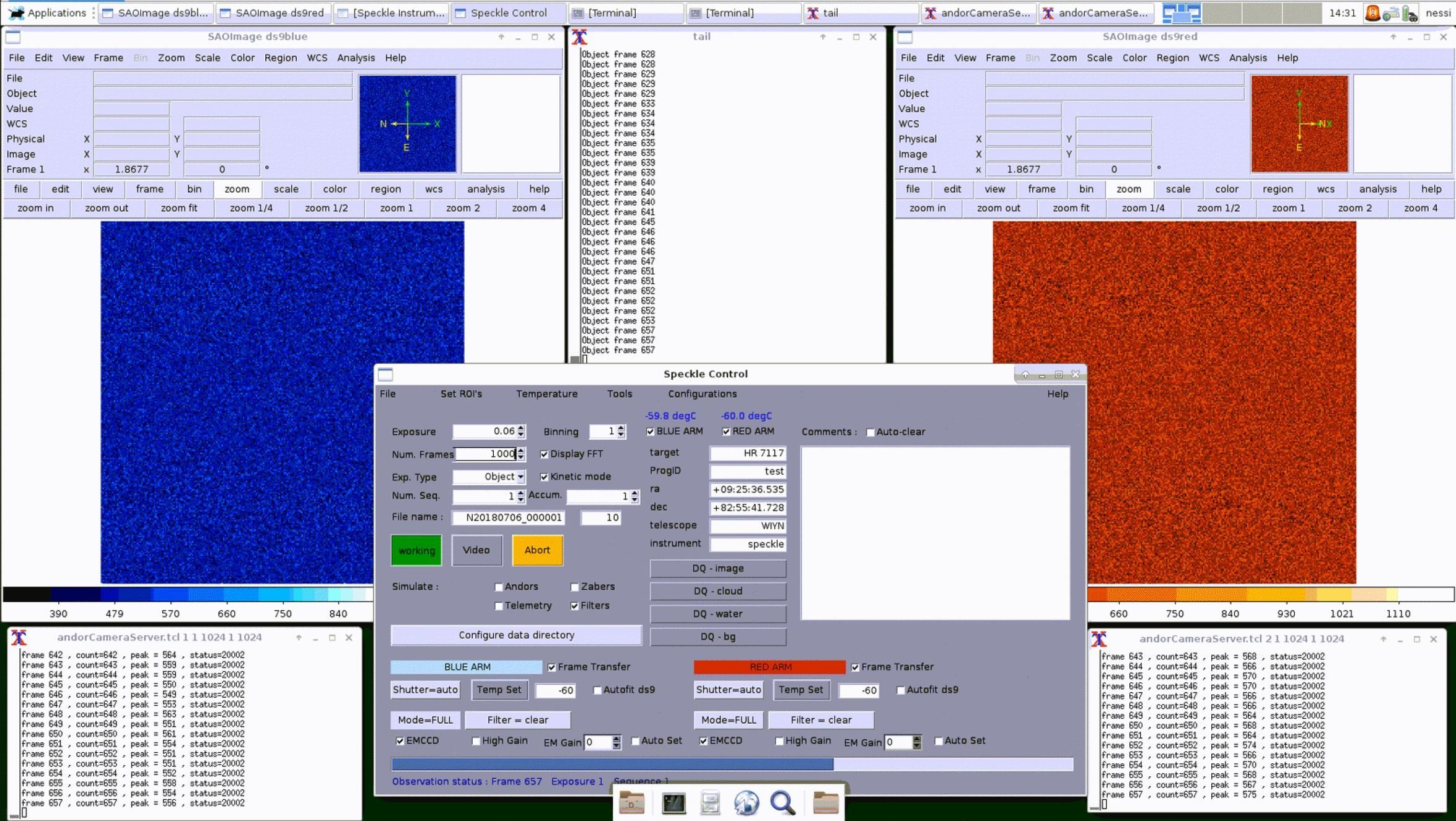

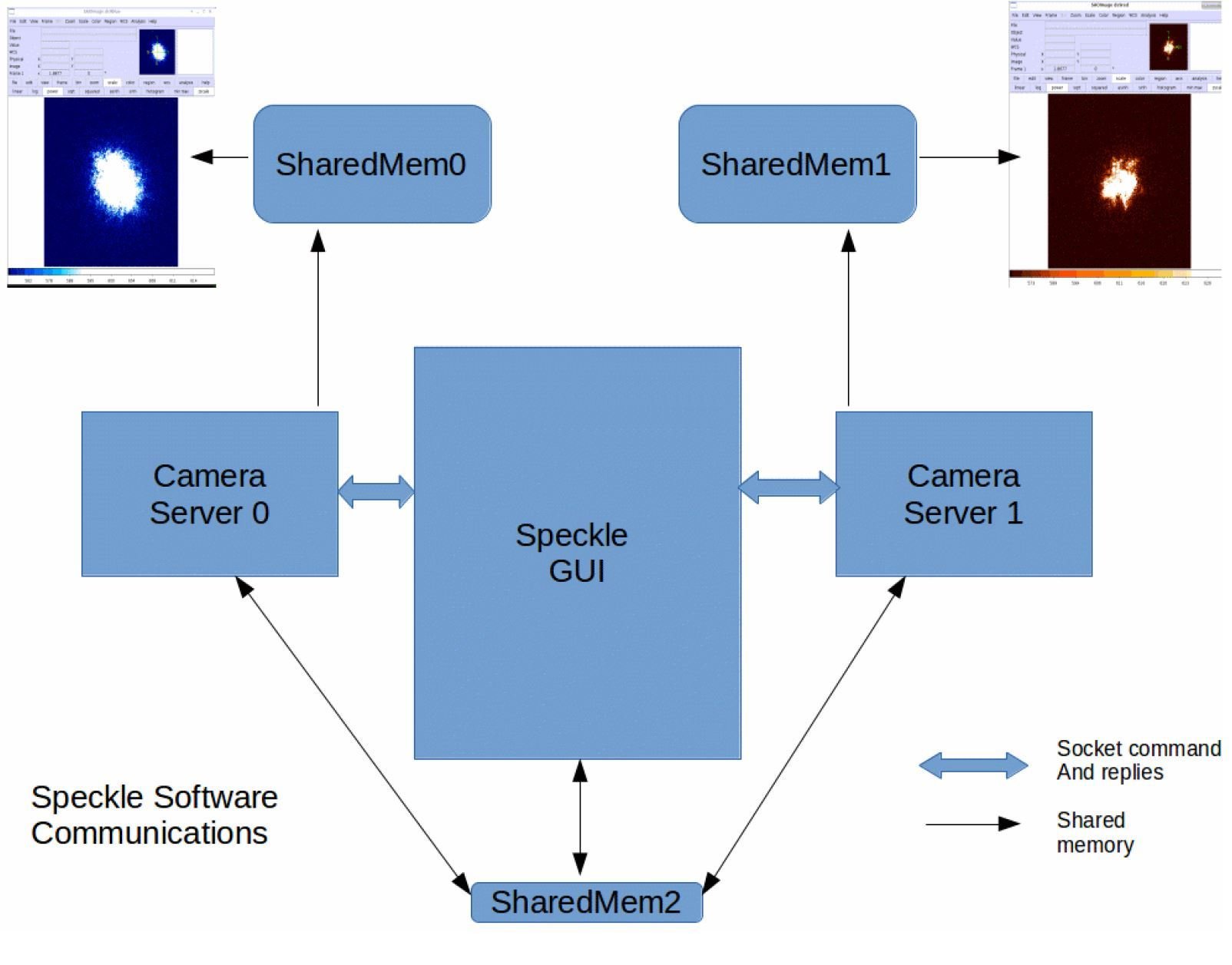
Seeing-limited
Reconstructed

42''
Two-color wide-field speckle reconstruction
from NESSI
- 0.25'' resolution from 500 frames (20s)
- compromise b/t angres and contrast
- Seeing ~ 0.85''




3-4x improvement over native seeing
Text
Text


M13
- astrometry of clusters
- very early results and little calibration or modelling over the FoV
Reconstructed
Seeing-limited
Abs astrometry residuals
~6-7 mas
4.2 mas
Further improvement possible to obtain ~0.02 pix (~0.4mas)
- optics, dither, deeper obs
0.05 mag accuracy on aperture photometry
FWHM ~7pix (0.57'')
FWHM ~4pix (0.3'')
Online User Manual

Connecting
- Power: open browser & go to boot bar IP
- 4 plugs: pc, red camera, blue camera, power strip (zabers+filter wheels)
- VNC: find Alopeke/Zorro in gemini VNC gui
Starting Up
- After PC starts
- power cycle the filter wheels (boot bar:power strip)
- Run permissions script
- Start Speckle Control Software
- Once software is up
- Home the Zabers
- Speckle focus: extend
- Pickoff: extend
- Mode: Speckle
Speckle settings
- Exp: 0.06s
- Frames: 1000
- Frame Transfer: on
- Check file name
- Check data dir
- Check TCS info
- Check camera temps
- Set Filters

On-sky
- Run video
- ROI: Full
- Allow SOS to center & lock
- Use mouse in ds9 to check counts & set EM gain for each channel
- target is 5k-14k counts
- to set gain > 300 check "high gain" DO NOT SATURATE w/ high gain enabled
- Abort video, set ROI: 256
- check num frames and num sets, filters, comments
- click Observe

V <9=3 sequences
V∼9-12=5 sequences
V∼12-14=7-9 sequences
V∼14-16=11-13 sequences
V∼16+ =15-17 sequences

Shutdown
- Set EM gain: 0
- Stow: pickoff
- Stow: Speckle focus
- File>Shutdown
- Turn off cameras in bootbar
- Run "endnight" script in ~/data/$UTdate$ directory
- Close VNC
Scripts


Tips
- Do not forget to re-home the Zabers anytime there's a power cycle
- Also check this first if anything looks strange, then send them to position
-
When you start the PC, the filter wheels must be power cycled after reboot and the "Device Permissions" script must be run
-
Pulldowns can be "torn out" of gui to stand-alone windows
-
EM gain can be changed while video mode is running. It will update in next series of frames taken
-
To move\adjust the ROI, select it from the buttom menu then in ds9
go to edit→region and drag the region where you would like
it to go. Click “OK" in the pop-up box
Additional References
Brown, R. H. and Twiss, R. Q., Nature 177, 27{29 (Jan. 1956).
Hanbury Brown, R., Davis, J., and Allen, L. R., MNRAS 137, 375 (1967).
Labeyrie, A., A&A 6, 85 (May 1970).
Knox, K. T. and Thompson, B. J., ApJ 193, L45{L48 (Oct. 1974).
Weigelt, G., Scientifc Importance of High Angular Resolution at Infrared and Optical Wavelengths, Ulrich, M. H. and Kjaer, K., eds., 95{114 (1981).
Weigelt, G., Lowell Observatory Bulletin 9, 144{152 (1983).
Weigelt, G. P., Optics Communications 21, 55{59 (Apr. 1977).
Lohmann, A. W., Weigelt, G., and Wirnitzer, B., Appl. Opt. 22, 4028{4037 (Dec. 1983).
Fried, D. L., Journal of the Optical Society of America (1917-1983) 68, 1651–1658 (Dec. 1978).
Horch, E. P., Veillette, D. R., Baena Galle, R., Shah, S. C.,O'Rielly, G. V., and van Altena, W. F., AJ 137, 5057{5067 (June 2009).
Brugière, T., Mayer, F., Fereyre, P., Gu´erin, C., Dominjon, A., and Barbier, R., Nuclear Instruments and Methods in Physics Research A 787, 336–339 (July 2015).
Scott, N. J., Howell, S. B., Horch, E. P., and Everett, M. E., PASP 130, 054502 (May 2018).
Hofmann, K.-H. and Weigelt, G., A&A 278, 328-339 (Oct. 1993).
Law, N. M., Mackay, C. D., and Baldwin, J. E., A&A 446, 739{745 (Feb. 2006).
Tokovinin, A. and Cantarutti, R., PASP 120, 170 (Feb. 2008).
Andor, CCD, EMCCD and ICCDComparions & Minimizing Clock Induced Charge.
Howell, S. B., Everett, M. E., Sherry, W., Horch, E., and Ciardi, D. R., AJ 142, 19 (July 2011).
Furlan, E., Ciardi, D. R., Everett, M. E., Saylors, M., Teske, J. K., Horch, E. P., Howell, S. B., van Belle, G. T., Hirsch, L. A., Gautier, III, T. N., Adams, E. R., Barrado, D., Cartier, K. M. S., Dressing C. D., Dupree, A. K., Gilliland, R. L., Lillo-Box, J., Lucas, P. W., and Wang, J., AJ 153, 71 (Feb. 2017).
Furlan, E. and Howell, S. B., AJ 154, 66 (Aug. 2017).
Teske, J. K., Ciardi, D. R., Howell, S. B., Hirsch, L. A., and Johnson, R. A., ArXiv e-prints (Apr. 2018).
Fulton, B. J., Petigura, E. A., Howard, A. W., Isaacson, H., Marcy, G. W., Cargile, P. A., Hebb, L., Weiss, L. M., Johnson, J. A., Morton, T. D.,Sinuko , E., Cross eld, I. J. M., and Hirsch, L. A., AJ 154, 109 (Sept. 2017).
Hirsch, L. A., Ciardi, D. R., Howard, A. W., Everett, M. E., Furlan, E., Saylors, M., Horch, E. P., Howell, S. B., Teske, J., and Marcy, G. W., AJ 153, 117 (Mar. 2017).
Matson, R. A., Howell, S. B., Horch, E. P., Everett, M. E., ArXiv e-prints (May. 2018)